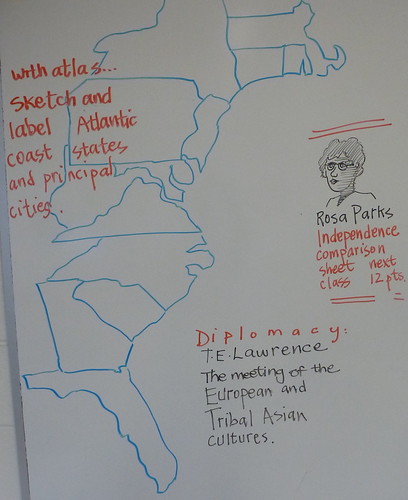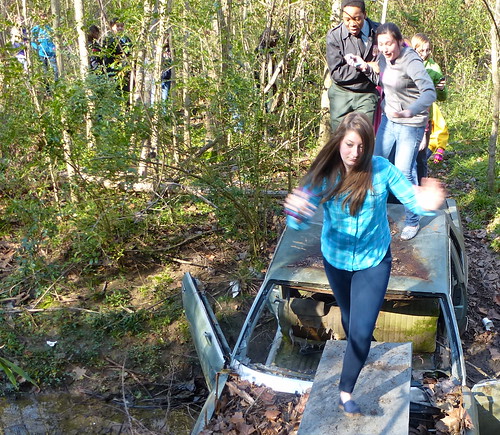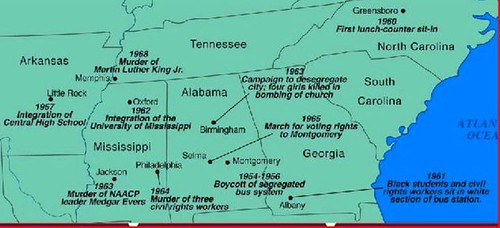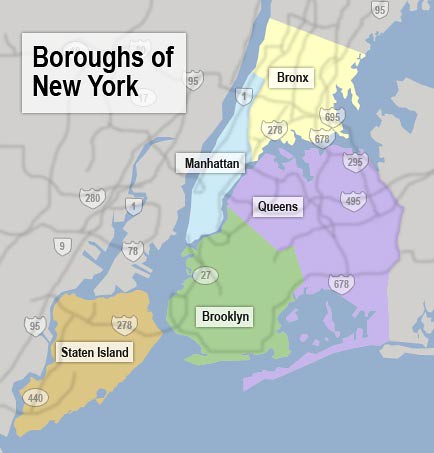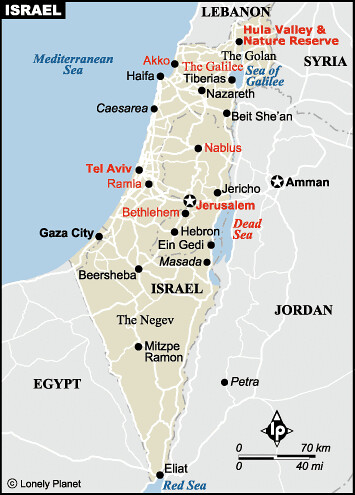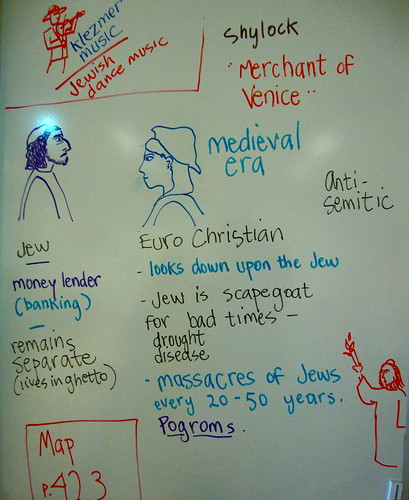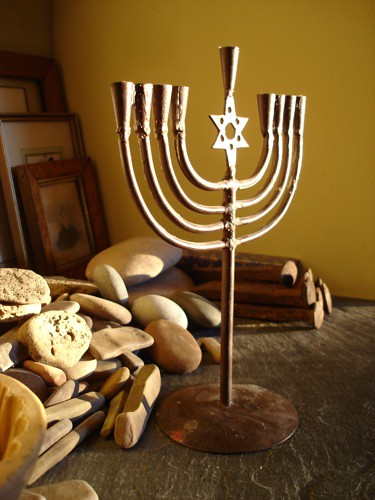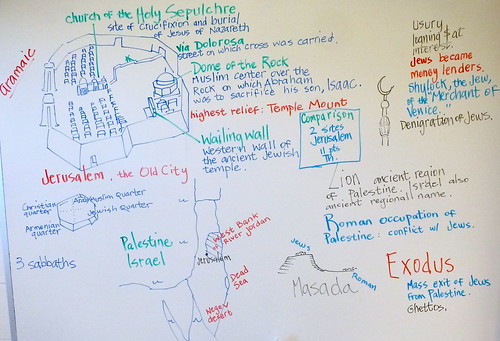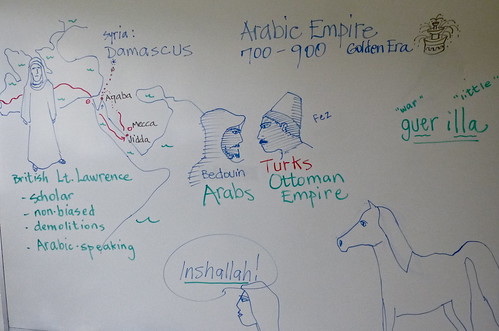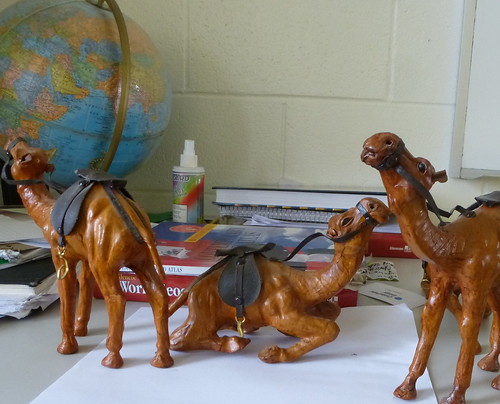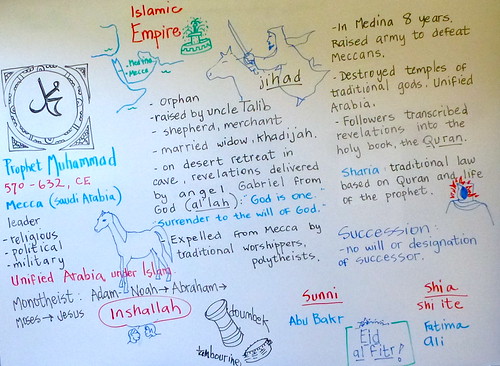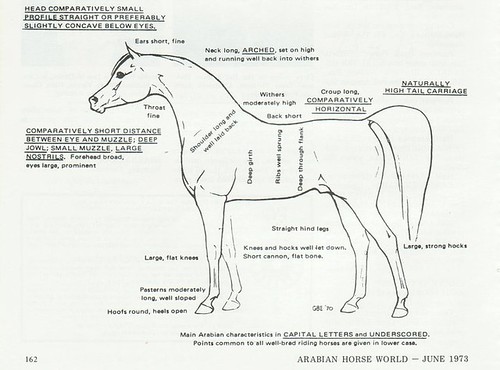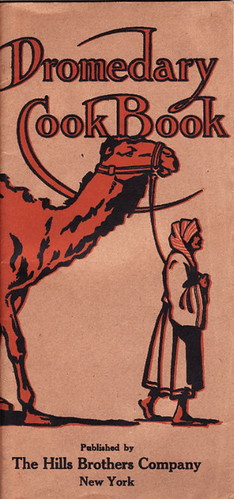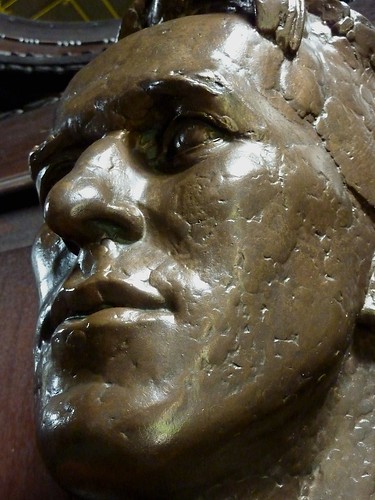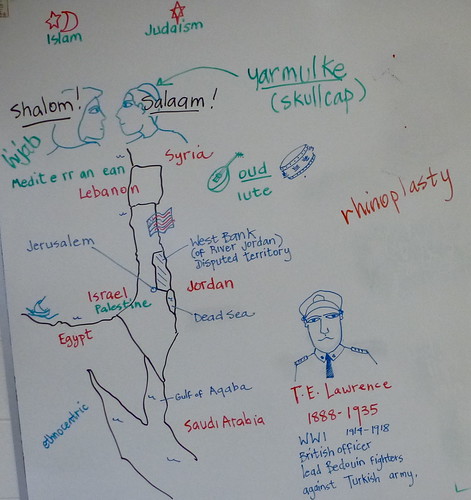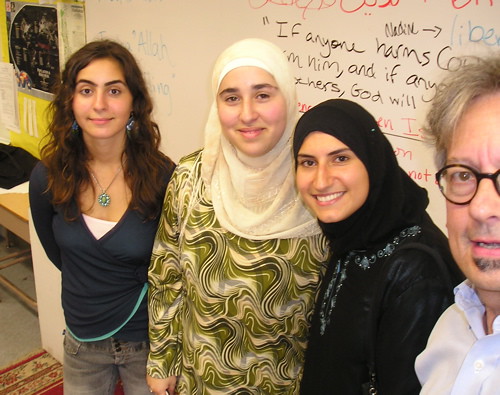No less than 14 Atlantic states to review:
- what do you see when you look at America's eastern shores?
A series of harbors. These ports were very important in establishing colonies and in creating wealth through trade.
To this day the Atlantic cities of NYC and Washington, DC are important to the entire world.
Also list Boston, NYC, Baltimore, Philadelphia, Wash, DC, Jacksonville, Miami.
Thursday, February 28, 2013
Boston to Miami: an Atlantic coast states review
Social studies issue: America's health in regards obesity, diabetes and diet
"Today, one in three adults is considered clinically obese, along with one in five kids, and 24 million Americans are afflicted by type 2 diabetes, often caused by poor diet, with another 79 million people having pre-diabetes," writes author Michael Moss in the NYTimes story, "The Extraordinary Science of Addictive Junk Food."
"The public and the food companies have known for decades now that sugary, salty, fatty foods are not good for us in the quantities that we consume them. So why are the diabetes and obesity and hypertension numbers still spiraling out of control? It’s not just a matter of poor willpower on the part of the consumer and a give-the-people-what-they-want attitude on the part of the food manufacturers. What I found, over four years of research and reporting, was a conscious effort — taking place in labs and marketing meetings and grocery-store aisles — to get people hooked on foods that are convenient and inexpensive."
Locally speaking -
"The fight against obesity in the Shreveport area has started," says KTBS.com. "Healthy Green and into the Outdoors kicked off Saturday, and its goal is to get you fit. This comes after an announcement last year from the Blue Cross, Blue Shield of Louisiana Foundation that detailed an initiative to fight obesity."
"We want people to get healthy," Community Foundation Executive Director Paula Hickman said. "We want them to live environmentally sound practices, and we want them to get up and moving outside."
Her organization and others will promote healthy eating, exercise and green practices locally through several healthy living projects. The most important is the creation of community gardens around Shreveport. Hickman says obesity is an expensive problem in the area.
"Our community has about a 27 percent obesity rate, and that's costing us about $150 million a year," Hickman said.
More than a million dollars has been poured into Shreveport for health projects. Most of that was granted by the Blue Cross, Blue Shield of Louisiana Foundation. Its executive director Christy Reeves says the projects will last for three years.
"There are certain phases for everything. So, over the next three years you're going to see activities like the one that's today," Reeves said. "This is one that is specific to this neighborhood and region, but we'll have a lot of activities across the area over the next three years."
Wednesday, February 27, 2013
Anime hero artwork competition for NASA
SolarMAX is the official superhero mascot for Sun-Earth Days!
Keeping an eye on space weather is quite a large job for one super hero so he needs your help.
Your job is to create and submit a new and original anime style character with a visible space weather related super power.
Anime Contest
Submission period: 2/18/2013 - 3/20/203
NASA's Sun-Earth Days program wants to see your best Anime artwork! Tag your artwork with #SolarMaxAnime to enter the Sun-Earth Days 'SolarMAX ANIME' Contest, and you could be featured on the NASA Sun-Earth Day website and upcoming webcast on March 22, 2013!
See more at http://sunearthday.nasa.gov/2013/solarmax/contest.php
Monday, February 25, 2013
Comparing the independence struggle of Bedouin people to the struggle of Black Americans in the US Civil Rights Movement
In brief notes, create a comparison chart between 4 events in what we call the Arab Revolt, as guided partly by TE Lawrence, aka Lawrence of Arabia, to 4 events that marked the US Civil Rights Movement.
12 pts. Due Fri (b) or Mon (a).
Title, documentation.
Including a US map of southern states, list and Briefly Describe events such as (you may choose)
- Rosa Parks and the Montgomery, AL, bus boycott, 1955
- Desegregation of schools in Little Rock, 1957.
- Assassination of Martin Luther King, Jr, 1968.
- Federal legislation on civil rights, voting rights and housing rights, 1964 - 1968, Washington, DC.
On the Lawrence side, consider
- Battle for Aqaba, 1916
- Attacks on the Turkish Hejaz Railway, 1916
- Battle for Damascus, 1917
- Sykes-Picot Treaty, 1916
Thursday, February 21, 2013
Abraham and Muhammad were here: the interior of the Dome of the Rock
Ancient crossroads: Jerusalem
1. Jerusalem happens to be located, if you check on this carefully, in the nation of a) Jordan b) Israel c) Egypt d) Syria.
2. "The street of sorrows," is better known as a) Via Dolorosa b) Church of the Holy Sepulchre c) Christian Quarter d) Arab Quarter.
3. About 300 AD (CE) a person arrived from Constantinople to ask where Jesus of Nazareth had been crucified and buried. That person was a) Constantine, the Roman Emperor b) Herod, the Jewish leader who was an ally of the Romans c) Nebuchadnezzar of Persia
d) Helena, mother of Constantine.
4. Who was the most ancient historic figure? a) Abraham b) Jesus of Nazareth c) the Prophet Muhammed.
5. Which one is the most recent historic figure? a) Abraham b) Jesus of Nazareth c) the Prophet Muhammed.
6. Which one of these men is revered by adherents in 3 religions? a) Abraham b) Jesus of Nazareth c) the Prophet Muhammed.
7. In the center of the city of Mecca is a shrine called the a) Black Stone b) Kaaba c) Grand Mosque d) Minaret.
8 and 9. There are 2 sites on the Temple Mount, the highest elevation in Jerusalem. Choose 2: a) Church of the Holy Sepulchre b) Dome of the Rock c) Western Wall of the Jewish Temple d) Via Dolorosa e) Armenian Quarter.
10. Holy to the memory of both Abraham and the Prophet Muhammed: a) Dome of the Rock b) Western Wall of the Ancient Temple
c) Church of the Holy Sepulchre d) Via Dolorosa.
11. The word sepulchre means a) mound b) room c) rock d) tomb.
12. In Shakespeare's play The Merchant of Venice the money lender is a) Shylock, the Jew b) Antonio, the wealthy Venetian c) Jessica, the Jew's daughter d) The Prince of Verona.
13. The 3500-mile fissure called the Great Rift Valley cuts through __ Africa. a) East b) West c) South d) North.
Above photo: Abraham and Muhammad were here: the interior of the Dome of the Rock.
Wednesday, February 20, 2013
The language of much of New York and Miami: Yiddish
Yiddish is a Germanic language originally spoken by the Jews of Central and Eastern Europe, written in the Hebrew alphabet, and containing a substantial substratum of words from Hebrew as well as numerous loans from Slavic languages.
chutzpah
Nerve, extreme arrogance, brazen presumption. In English, chutzpah often connotes courage or confidence, but among Yiddish speakers, it is not a compliment.
feh!
An expression of disgust or disapproval, representative of the sound of spitting.
glitch
Or glitsh. Literally “slip,” “skate,” or “nosedive,” which was the origin of the common American usage as “a minor problem or error.”
goy
A non-Jew, a Gentile.
klutz
Or better yet, klots. Literally means “a block of wood,” so it’s often used for a dense, clumsy or awkward person. See schlemiel.
kosher
Something that’s acceptable to Orthodox Jews, especially food. Other Jews may also “eat kosher” on some level but are not required to. Food that Orthodox Jews don’t eat – pork, shellfish, etc.
kvetsh
In popular English, kvetch means “complain, whine or fret,” but in Yiddish, kvetsh literally means “to press or squeeze."
maven
Pronounced meyven. An expert, often used sarcastically.
Mazel Tov
Or mazltof. Literally “good luck,”
mentsh
An honorable, decent person, an authentic person, a person who helps you when you need help. Can be a man, woman or child.
Israel: Land of the Bible; Land of Violent Struggle
Identifications:
- Sea of Galilee
- Nazareth
-Tel Aviv
- West Bank, disputed region (see atlas)
- Jerusalem
- Bethlehem
- River Jordan
- Dead Sea
- Negev (desert)
- Gaza Region
- Neighboring nations
- Red Sea
- Mediterranean
Brief comparison essay; choose one topic .
* Mecca and Jerusalem
* Great Mosque of Mecca and Dome of the Rock
* Use class notes.
Terms:
* Jewish communities:
Liberal, Reformed, Orthodox. Also, secular, or non-religious, Jews.
* Which group would observe the ancient dietary restrictions called Kosher? Orthodox; some Reformed.
* Orthodox means whatever is commonly accepted. But the Jewish Orthodox refers to a strictly conservative view point.
* Not all Arabs are Muslims. Nor are all Muslims Arabs.
Jews in Europe in the Medieval era: Shylock
Shylock:
I am a Jew. Hath not a Jew eyes? Hath not a Jew hands,
organs, dimensions, senses, affections, passions; fed with the same
food, hurt with the same weapons, subject to the same diseases,
heal'd by the same means, warm'd and cool'd by the same winter
and summer, as a Christian is? If you prick us, do we not bleed? If
you tickle us, do we not laugh? If you poison us, do we not die?
And if you wrong us, do we not revenge? If we are like you in the
rest, we will resemble you in that.
The Merchant Of Venice Act 3, scene 1, 58–68
Jewish studies: diaspora, separation and prejudices
Ancient land of the Hebrews
1000 BC: 2 kingdoms - in the north, the Kingdom of Israel, and, in the south, the Kingdom of Judah (link to Judaism, Jew).
**********
The Wandering Jew is a phrase that describes an ancient stereotype of the Jew as someone searching for a peaceful home.
The Diaspora - dispersal of Jewish peoples - was significant during the Roman era. They left because the Romans treated them harshly. The Romans were moderate in their treatment of cooperative people. Rebellious kingdoms received violent retribution. The Jews were bitter toward the Romans and non-cooperative.
Jewish peoples emigrated to every corner of the globe, but most of them went to Europe. Nations famous for their influential Jewish populations were Italy, Spain, France, Germany and Russia.
Forced to live in the back of town, the Jews kept themselves generally separate from the Christians. No Jew would consider a marriage with a Christian. They lived in the ghetto, an Italian word for the Jewish Quarter.
Christians - including the Popes - encouraged mistrust and hatred of Jews. They blamed Jews for the death of Jesus (deicide) and opposed them for not accepting Jesus as Messiah.
From Wikipedia on anti-Semitism in the Middle Ages in Europe:
Among socio-economic factors were restrictions by the authorities, local rulers and frequently church officials who closed many professions to the Jews, pushing them into marginal occupations considered socially inferior, such as local tax and rent collecting or moneylending, seen in these times as a "necessary evil" due to the increasing population and urbanization during the High Middle Ages.
Catholic doctrine of the time held that moneylending for interest was a sin, and as such Jews tended to dominate this business. The Torah and later sections of the Hebrew Bible criticise Usury but the Bible is slightly ambiguous.
Jews pursued money lending as there were few other occupations open to them. This provided support for claims that Jews are insolent, greedy, engaged in usury, and in itself contributed to a negative image. Natural tensions between creditors (typically Jews) and debtors (typically Christians) were added to social, political, religious and economic strains. Peasants who were forced to pay their taxes to Jews could personify them as the people taking their earnings while remaining loyal to the lords on whose behalf the Jews worked.
Today, "usury" means loaning money at exhorbitant interest.
Also:
As the Black Death epidemics devastated Europe in the mid-14th century, annihilating more than a half of the population, Jews were taken as scapegoats. Rumors spread that they caused the disease by deliberately poisoning wells. Hundreds of Jewish communities were destroyed by violence, in particular in the Iberic peninsula and in the Germanic Empire.
Torah, the Jews’ scripture - usually read from a traditional scroll.
Pogrom - murderous massacre of a Jewish community.
Assignment: Comparison report on 2 institutions in Old Jerusalem
Under a colorful title, with documentation, a map of Israel or Jerusalem and brief notes, compare any 2 institutions in Historic Jerusalem.
- Dome of Rock mosque or shrine
- Church of the Holy Sepulchre
- Western Wall of the ancient Jewish Temple, aka the Wailing Wall
- Via Dolorosa
11 pts. Due next class.
Dome of Rock - Old Jerusalem
The gold-domed Muslim mosque known as the Dome of the Rock is located on the Temple Mount and contructed over the site of the second Jewish Temple in the Old City of Jerusalem. It can be seen from many vantage points around the city. This shot was taken from the Garden of Gethsemane.
The Dome of the Rock was constructed between 689 and 691 CE.
Tuesday, February 19, 2013
Jerusalem: crossroads city holy to three religions
Jerusalem is a holy city to the three major Abrahamic religions—Judaism, Christianity and Islam. It is one of the oldest cities, says Wikipedia.
Jerusalem has been the holiest city in Jewish tradition since, according to the Hebrew Bible, King David of Israel first established it as the capital of the united Kingdom of Israel in c. 1000 BCE, and his son, King Solomon, commissioned the building of the First Temple in the city.[10]
In Christian tradition, Jerusalem has been a holy city since, according to the New Testament, Jesus was crucified there, possibly in c. 33 CE,[11][12][13] and 300 years later Saint Helena identified the pilgrimage sites of Jesus' life.
In Sunni Islam, Jerusalem is the third-holiest city.[14][15] In Islamic tradition in 610 CE it became the first Qibla, the focal point for Muslim prayer (Salah),[16] and Muhammad made his Night Journey there ten years later, according to the Quran.
Today, the status of Jerusalem remains one of the core issues in the Israeli–Palestinian conflict.
"Zion", initially referred to a distinct part of the city, but later came to signify the city as a whole and to represent the biblical Land of Israel.
The Bible records that David was succeeded by his son Solomon,[76] who built the Holy Temple on Mount Moriah. Solomon's Temple (later known as the First Temple), went on to play a pivotal role in Jewish history as the repository of the Ark of the Covenant.
Roman rule over Jerusalem and the region began to be challenged with the First Jewish–Roman War, which resulted in the destruction of the Second Temple in 70 CE.
The exodus, or diaspora, of Jewish peoples took place largely during the period of Roman rule.
In the 1890's the Jews in Europe began to discuss a homeland for Jewish people. Those who liked this movement were called Zionists.
Zionists decided to get land in Palestine by purchasing the acreage from the Ottoman Turkish rulers - the people who owned the Mid East.
In 1917 after the Battle of Jerusalem, the British Army, led by General Edmund Allenby, captured the city,[140] and in 1922, the League of Nations at the Conference of Lausanne entrusted the United Kingdom to administer the Mandate for Palestine, the neighbouring mandate of Transjordan to the east across the River Jordan, and the Iraq Mandate beyond it.
From 1922 to 1948 the total population of the city rose from 52,000 to 165,000 with two thirds of Jews and one-third of Arabs (Muslims and Christians).[141] The situation between Arabs and Jews in Palestine was not quiet. In Jerusalem, in particular, Arab riots occurred in 1920 and in 1929.
Today Jerusalem has a population of 747,600—64% Jewish, 32% Muslim, and 2% Christian.
While some Israelis see Jerusalem as poor, rundown and riddled with religious and political tension, the city has been a magnet for Palestinians, offering more jobs and opportunity than any city in the West Bank or Gaza Strip. Palestinian officials have encouraged Arabs over the years to stay in the city to maintain their claim.[212][213] Palestinians are attracted to the access to jobs, healthcare, social security, other benefits, and quality of life Israel provides to Jerusalem residents.
Jerusalem has been sacred to Judaism for roughly 3000 years, to Christianity for around 2000 years, and to Islam for approximately 1400 years. The 2000 Statistical Yearbook of Jerusalem lists 1204 synagogues, 158 churches, and 73 mosques within the city.
Aramaic: language of Jesus of Nazareth; it pre-dates both Hebrew and Arabic.
Friday, February 15, 2013
Arabs vs Turks in WWI and the intervention of TE Lawrence
Lawrence's journey -
- London
- English Channel
- Atlantic
- Strait of Gibraltar
- Mediterranean
- Cairo
- Red Sea
- Jidda, the Arabian Desert
- An Nefud Desert
- Aqaba, Jordan
- Sinai Peninsula
- Jordan
- Syria
- Damascus
Guerilla fighting: using ambushes, sabotage, raids, petty warfare, the element of surprise, and extraordinary mobility to dominate a larger and less-mobile traditional army.
Inshallah: "If God Wills it."
Bedouins later called Arabs.
Ottoman Empire: Turks controlled the entire Mid East.
WWI: Germans partnered w Turks against the Arabs, who partnered with Britain.
Col. Brighton on the reason the small nation of Britain was great: "Discipline."
"Allah favors the compassionate."
Islamic Golden Age: From about 700 to 1200 CE. Notes wikipedia: During this period the Arab world became an intellectual center for science, philosophy, medicine and education; the Abbasids championed the cause of knowledge and established the House of Wisdom in Baghdad, where both Muslim and non-Muslim scholars sought to translate and gather all the world's knowledge into Arabic.[2] Many classic works of antiquity that would otherwise have been lost were translated into Arabic and Persian and later in turn translated into Turkish, Hebrew and Latin.[2] During this period the Arab world was a collection of cultures which put together, synthesized and significantly advanced the knowledge gained from the ancient Roman, Chinese, Indian, Persian, Egyptian, Greek, and Byzantine civilizations.
Thursday, February 14, 2013
Camel, horse and Kaaba
1. Salah: a) Prayer b) Statement of belief in God (Al Lah) c) Alms giving
d) pilgrimage to Mecca e) Fasting during Ramadan.
2. Zakat: a) Prayer b) Statement of belief in God (Al Lah) c) Alms giving
d) pilgrimage to Mecca e) Fasting during Ramadan.
3. Sawm: a) Prayer b) Statement of belief in God (Al Lah) c) Alms giving
d) pilgrimage to Mecca e) Fasting during Ramadan.
4. Hajj: a) Prayer b) Statement of belief in God (Al Lah) c) Alms giving
d) pilgrimage to Mecca e) Fasting during Ramadan.
5. Shahada: a) Prayer b) Statement of belief in God (Al Lah) c) Alms giving
d) pilgrimage to Mecca e) Fasting during Ramadan.
6. Ancient name for the Fertile Crescent, today's Iraq: a) Ur b) Baghdad
c) Mesopotamia d) Tigris valley.
7. The earliest form of writing contracts, monetary sums and enumerations of goods. a) cuneiform b) hieroglyphics c) Code of Hammurabi d) clay reliefs.
8. Camel blood is edible. T / F
9. Dromedaries are not domesticated but the hump is considered a delicacy. T / F
10. Camel milk is a like a meal for Mongolians. T / F
11. The Horn of Africa: a) Sudan b) Somalia c) Yemen d) Kenya.
12. A 1300 lb camel can store some 53 US gals of water in their hump in 3 minutes. T / F
13. Arabian horses were first owned by __ people. a) Mesopotamian
b) Bedouin c) Muslim d) Persian.
14. The Kaaba and Grand Mosque of __ is the center of the Hajj and of daily thoughts and prayers of observant Muslims. a) Mecca b) Medina c) Allah
d) Mocha.
Life of the Prophet Muhammad, rise of the Islamic Empire
Be ready for questions on your notes, including
- Mesopotamia
- Camels and Arabian horses
- Islam and the Prophet
- Arabian peninsula
Wednesday, February 13, 2013
The $10,000 horse: an Arabian
The Arabian is a breed of horse that originated on the Arabian Peninsula. With a distinctive head shape and high tail carriage, the Arabian is one of the most easily recognizable horse breeds in the world, says Wikipedia.
It is also one of the oldest breeds, with archaeological evidence of horses that resemble modern Arabians dating back 4,500 years. Throughout history, Arabian horses spread around the world by both war and trade, used to improve other breeds by adding speed, refinement, endurance, and strong bone.
The Arabian developed in a desert climate and was prized by the nomadic Bedouin people, often being brought inside the family tent for shelter and protection from theft. Selective breeding for traits including an ability to form a cooperative relationship with humans created a horse breed that is good-natured, quick to learn, and willing to please. The Arabian also developed the high spirit and alertness needed in a horse used for raiding and war.
Arabian horses have refined, wedge-shaped heads, a broad forehead, large eyes, large nostrils, small muzzles and naturally high tail carriage. Most display a distinctive concave, or "dished" profile.
The proto-Arabian horse may have been domesticated by the people of the Arabian peninsula known today as the Bedouin, some time after they learned to use the camel, approximately 4,000–5,000 years ago.[76][77] Other scholars, noting that horses were common in the Fertile Crescent but rare in the Arabian peninsula prior to the rise of Islam, theorize that the breed as it is known today only developed in large numbers when the conversion of the Persians to Islam in the 7th century brought knowledge of horse breeding and horsemanship to the Bedouin.
The Bedouin way of life depended on camels and horses: Arabians were bred to be war horses with speed, endurance, soundness, and intelligence.[80][81] Because many raids required stealth, mares were preferred over stallions as they were quieter, and therefore would not give away the position of the fighters.[80] A good disposition was also critical; prized war mares were often brought inside family tents to prevent theft and for protection from weather and predators.
All about Camelus dromedarius
Camelus bactrianus and Camelus dromedarius, via Wikipedia.com.
A camel is an even-toed ungulate within the genus Camelus, bearing distinctive fatty deposits known as "humps" on its back. The two surviving species of camel are the dromedary, or one-humped camel, which is native to the Middle East and the Horn of Africa; and the Bactrian, or two-humped camel, which inhabits Central Asia. Both species have been domesticated; they provide milk, meat, hair for textiles or goods such as felted pouches, and are working animals.
The term "camel" is derived via Latin and Greek from Hebrew or Phoenician gāmāl, possibly from a verb root meaning to bear or carry (related to Arabic jamala).
The average life expectancy of a camel is 40 to 50 years.[8][9] A full-grown adult camel stands 6 ft 1 in. at the shoulder and 7 ft 1 in. at the hump.[10] Camels can run at up to 40 mph in short bursts and sustain speeds of up to 25 mph.
Camels do not directly store water in their humps. The humps are actually reservoirs of fatty tissue: concentrating body fat in their humps minimizes the insulating effect fat would have if distributed over the rest of their bodies, helping camels survive in hot climates.[16][17] When this tissue is metabolized, it yields more than one gram of water for every gram of fat processed. This fat metabolization, while releasing energy, causes water to evaporate from the lungs during respiration (as oxygen is required for the metabolic process): overall, there is a net decrease in water.
The Horn of Africa has the world's largest population of camels.
Physiological adaptations allow them to withstand long periods of time without any external source of water.[17] Unlike other mammals, their red blood cells are oval rather than circular in shape. This facilitates the flow of red blood cells during dehydration[21] and makes them better at withstanding high osmotic variation without rupturing when drinking large amounts of water: a 1,300 lb camel can drink 53 US gal of water in three minutes.[22][23]
Camels are able to withstand changes in body temperature and water consumption that would kill most other animals. Their temperature ranges from 93 °F at dawn and steadily increases to 104 °F by sunset, before they cool off at night again.[17] Camels rarely sweat, even when ambient temperatures reach 120 °F.[8] Any sweat that does occur evaporates at the skin level rather than at the surface of their coat; the heat of vaporization therefore comes from body heat rather than ambient heat. Camels can withstand losing 25% of their body weight to sweating, whereas most other mammals can withstand only about 12–14% dehydration before cardiac failure results from circulatory disturbance.[23]
When the camel exhales, water vapor becomes trapped in their nostrils and is reabsorbed into the body as a means to conserve water.[24] Camels eating green herbage can ingest sufficient moisture in milder conditions to maintain their bodies' hydrated state without the need for drinking.
The camels' thick coats insulate them from the intense heat radiated from desert sand.[26] Its long legs help by keeping them farther from the hot ground, which can heat up to158 °F.[27][28]
Camels' mouths have a thick leathery lining, allowing them to chew thorny desert plants. Long eyelashes and ear hairs, together with nostrils that can close, form a barrier against sand. If sand gets lodged in their eyes, they can dislodge it using their transparent third eyelid. The camels' gait and widened feet help them move without sinking into the sand.[27][29][30]
The kidneys and intestines of a camel are very efficient at reabsorbing water. Camel urine comes out as a thick syrup, and camel feces are so dry the Bedouins use it to fuel fires.[31][32][33][34]
Dromedaries may have first been domesticated by humans in southern Arabia, around 3,000 BC, the Bactrian in central Asia around 2,500 BC.
Camel milk is a staple food of desert nomad tribes and is sometimes considered a meal in and of itself; a nomad can live on only camel milk for almost a month.[15][31][82][83] Camel milk is rich in vitamins, minerals, proteins, and immunoglobulins;[84] compared to cow's milk, it is lower in fat and higher in lactose, potassium, iron, and vitamin C.
A camel carcass can provide a substantial amount of meat.
The brisket, ribs and loin are among the preferred parts, and the hump is considered a delicacy.[92] The hump contains "white and sickly fat", which can be used to make the khli (preserved meat) of mutton, beef, or camel.[93] Camel meat is reported to taste like coarse beef.
Camel meat has been eaten for centuries. It has been recorded by ancient Greek writers as an available dish in ancient Persia at banquets, usually roasted whole.[97] The ancient Roman emperor Heliogabalus enjoyed camel's heel.[31] Camel meat is still eaten in certain regions, including Somalia, Djibouti, Saudi Arabia, Egypt, Libya, Sudan, Kazakhstan, and other arid regions where alternative forms of protein may be limited or where camel meat has had a long cultural history.[14][31][92]
Camel blood is also consumable, as is the case in northern Kenya, where camel blood is drunk with milk and acts as a key source of iron, vitamin D, salts, and minerals.
There are around 14 million camels alive as of 2010, with 90% being dromedaries.[107] Dromedaries alive today are domesticated animals mostly living in the Horn of Africa, the Sahel, Maghreb, Middle East and South Asia.
The Bactrian camel is, as of 2010, reduced to an estimated 1.4 million animals, most of which domesticated.[34][107][111] The only truly wild Bactrian camels, of which there are less than one thousand, are thought to inhabit the Gobi Desert in China and Mongolia.
Tuesday, February 12, 2013
Making a point of Cuneiform via a mud tablet and stick stylus
Students secured a pinch of mud from the school yard, shaped it into a rectangle and glued it into their notebooks to celebrate learning about the Mesopotamian cuneiform writing.
The western world's earliest form of writing, the reeds cut from the banks of the Euphrates and Tigris Rivers were used to make wedge-shaped marks that looked somewhat like the profile of a golf tee.
Cuneiform tablets could be fired in kilns to provide a permanent record, or they could be recycled if permanence was not needed. Many of the clay tablets found by archaeologists were preserved because they were fired when attacking armies burned the building in which they were kept.
The script was also widely used on commemorative stelae (like the Code of Hammurabi) and carved reliefs to record the achievements of the rulers.
Mesopotamia was today's Iraq. The region, called the Fertile Crescent by historians, was later named Assyria and Babylonia.
The earliest writing was business oriented, say scholars. Numbers of bushels of grain paid for in numbers of lengths of timbers, to be paid in 8 months. Contracts. Enumerations.
The era was about 3000 BCE.
This region was also among the first to develop the wheel. First it was the potter's wheel. Later they developed the chariot wheel.
The Code of Law promulgated by King Hammurabi - about 1700 BCE - was one of the first in the western world. Again, contracts and business law were priorities. For all of its severity, "An eye for an eye, a tooth for a tooth," it was also one of the earliest examples of the idea of presumption of innocence.
Monday, February 11, 2013
Indie work: comparison essay on Lawrence of Arabia and Mohandas K Gandhi
Two great leaders to be compared:
a one-page essay in which details and the blending of topics is the key to making points.
Submit any day. Up to 10 pts.
Review of the Persian Gulf states
Ten nations on the Arabian peninsula
1. Island nation on the Persian Gulf.
2. Nation closest to the Horn of Africa.
3. Iraq is a Persian Gulf nation. T / F
4. Peninsular nation on the Persian Gulf.
5. Persian Gulf nation surrounded by Saudi Arabia and Iraq.
6. The Persian Gulf flows into the Gulf of Oman which opens into the __ Sea.
7. Abu Dhabi is the capital city of a nation composed of several emirates, or Arabian kingdoms. Name the nation.
8. On the eastern side of the Persian Gulf is the nation of __, long known as Persia.
9. Makkah (Mecca), Medina and Riyadh are cities in the nation of __ __ .
10. Arabia is seen as a peninsula because it is defined on 3 sides by these bodies of water: the Arabian Sea, the Persian Gulf and the __ Sea.
11. Mosul, Basrah, Fallujah, Ramadi, Sadr City, Baghdad: the nation?
12. The oil-wealthy, fabulous city of Dubai, home of the world's tallest building, the Burj Khalifah, is in what nation?
Thursday, February 07, 2013
Lawrence / Israel geography Magnet
Soldier-author TE Lawrence, "Lawrence of Arabia," provides a historic context for a study of Arabs and Europeans in SW Asia.
All material above eligible for quiz questions.
Tuesday, February 05, 2013
Five Pillars of Islam project: 10 pts; due next week
In notebook -
- colorful, Arabesque border
- List 5 Pillars
- brief explanation of each.
- illustration to accompany each.
- documentation
- title
- digital or cut-and-paste via paper.
10 pts
First class of next week.
